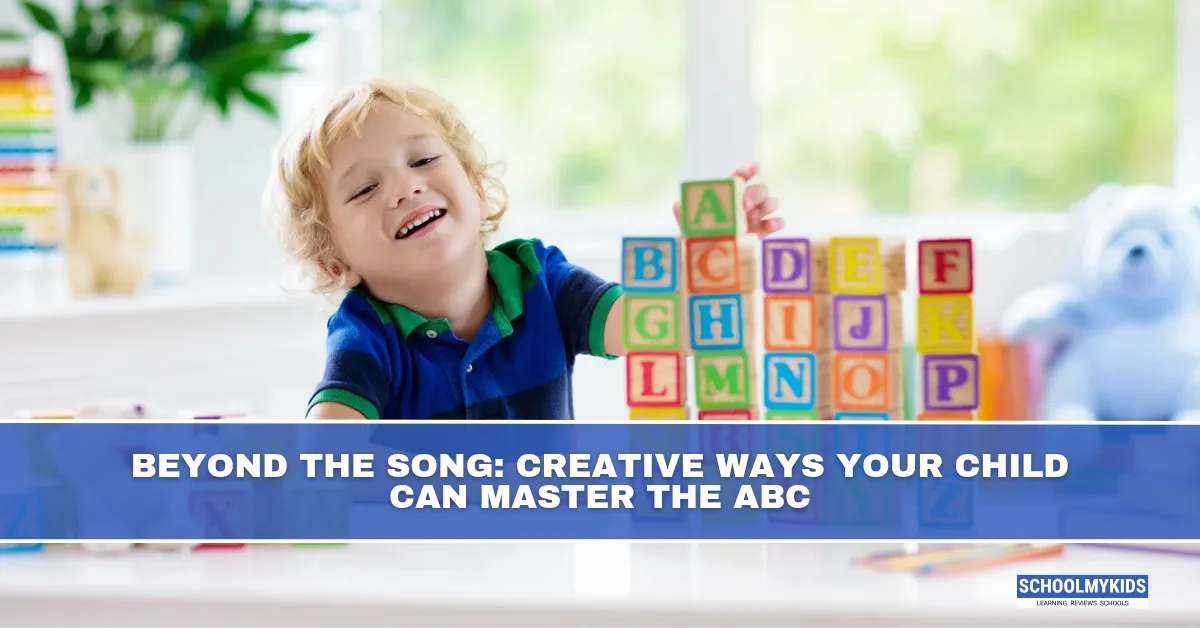"A, B, C, D, E, F, G..." We've all been there—singing the alphabet song for what feels like the thousandth time while your kid stares back with a mix of confusion and determination. Just when you think they've got it, they stumble over "L-M-N-O-P" or can't recognize the letter B outside the context of the song. Don't worry! You're not alone in this alphabet adventure.
Learning the ABCs is one of the first academic challenges your child will face, and it's completely normal for both of you to experience a few bumps along the way.
In this post, we'll explore why alphabet learning can be tricky, what your child might really be feeling during those alphabet sessions, and most importantly, how to transform this fundamental learning experience into something that you'll both enjoy. Get ready to discover playful, multisensory approaches that will help your child truly connect with their ABCs—and have fun doing it!
The ABC Struggles Are Real
As a parent, you might notice your child:
- Getting frustrated when they can't remember certain letters
- Mixing up letters that look similar (like b, d, p, and q)
- Learning the song perfectly, but not recognizing individual letters
- Losing interest quickly in traditional alphabet activities
- Memorizing letters in sequence but struggling to identify them randomly
Meanwhile, your child might be feeling:
- Overwhelmed by having to learn 26 different symbols
- Confused when letters make different sounds in different words
- Bored with repetitive practice methods
- Pressured when comparing themselves to siblings or classmates who learned faster
Sound familiar? Don't worry! These challenges are completely normal developmental hurdles. Every child learns differently and at their own pace.
Why ABC Learning Can Be Tricky
Young children are concrete learners, but letters are abstract symbols. Think about it – there's nothing inherently "B-like" about the letter B! Your child has to memorize these arbitrary shapes and connect them to sounds. That's a big cognitive task for a little brain!
Plus, when we teach the alphabet through song, kids often learn it as one long word ("LMNOP" anyone?). While the song helps with memorization, it doesn't always translate to recognizing individual letters.
Creative, Practical Ways to Master the ABCs
Here’s the good news: there are so many ways to teach the alphabet that don’t involve sitting still or memorizing flashcards. You can turn everyday moments into fun learning experiences—without making it feel like “school.” Here are some easy, creative ideas:
#1. Use Their Body
Kids love to move. So let them!
- Alphabet yoga: Turn each letter into a fun pose. “A” can be arms in the air, “B” can be a bent body. Get silly!
- Hopscotch with letters: Draw letters on the ground with chalk and call them out as your child jumps.
- Letter scavenger hunt: Hide letters around the house and go hunting together.
#2. Add the Senses
Touch, smell, hear, see—use it all.
- Sensory bins: Fill a tub with rice or beans, hide plastic letters, and let them dig around and find each one.
- Sandpaper letters: Let them trace rough-textured letters with their fingers. Feeling helps with remembering.
- Letter songs and rhymes: But go beyond the ABC song. Try rhymes for each letter—like “A is for apple, red and round.”
#3. Make It Personal
Children love anything that’s about them.
- Name play: Start with the letters in their name. These are often the first letters kids learn to recognize.
- Family alphabet: Make a book with photos of family members and the letter their name starts with.
- Art with letters: Let them paint, stamp, or glue shapes to form each letter. It becomes their masterpiece.
#4. Bring Learning into Daily Life
Alphabet time doesn’t have to be a sit-down session.
- Talk about letters during play: “Oh look, your toy truck starts with a T!”
- Letters in the kitchen: Cut food into letter shapes or use fridge magnets to spell fun words while cooking.
- Story time with a twist: Read alphabet books and let your child “find” the letters on each page.
#5. Go at Their Pace (Seriously)
Some kids might pick up letters at two. Others at four or five. And that’s perfectly fine.
- Celebrate small wins: If they recognize just three letters this week, that’s progress!
- Don’t push too hard: If they’re tired or frustrated, it’s okay to pause. Learning works best when it’s fun, not forced.
- Encourage without comparing: Every child is unique. Comparing them to siblings or classmates only adds pressure for both of you.
From a Kid’s Point of View
Sometimes we forget how overwhelming it can feel from a child’s side. All those letters? All those sounds? And adults expect you to just “get it”? Your child might be feeling:
- Embarrassed they can’t remember
- Confused by similar-looking letters
- Afraid of disappointing you
What helps most is knowing that you’re on their team. That you’re cheering for them, not pressuring them. That you’re there for the giggles, the mess, and the mistakes.
Conclusion
Many parents face these challenges, and every child’s journey with the ABCs is unique. By turning learning into a creative, everyday adventure, you’ll help your child build confidence, curiosity, and a lifelong love of learning. So go ahead—sing the song, but don’t stop there. Explore, play, and discover the alphabet together, one letter at a time!








Be the first one to comment on this story.